
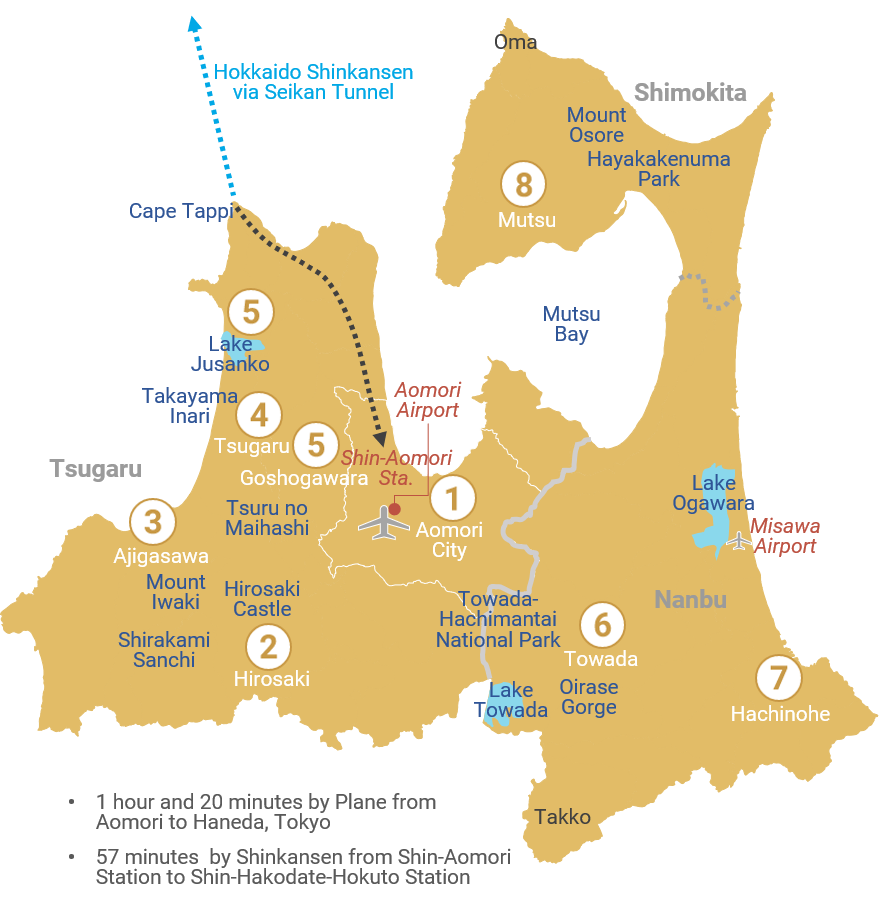
"Aomori" was named in the early Edo period by the Hirosaki Domain, inspired by a blue forest near present-day Honcho that served as a landmark for ships. Located at the northern tip of Honshu, it is the capital of Aomori Prefecture and has been a key maritime trade center for centuries
Video by Aomori Tourism and Convention Association, © Aomori Tourism and Convention Association.
Known for its beautifully preserved samurai district, featuring traditional Edo-period architecture. The city's centerpiece is Hirosaki Castle, built in 1611, surrounded by stunning cherry blossom gardens, making it one of Japan's top cherry blossom viewing spots in spring
Video by Hirosaki Tourism And Convention Bureau, © Hirosaki Tourism And Convention Bureau.
Ajigasawa Town sits on Aomori Prefecture's west coast, flanked by the Sea of Japan to the north and Mount Iwaki to the south. It's celebrated for its diverse natural beauty, blending sea, mountains, and rivers harmoniously
Video by Ajigasawa Town, © Ajigasawa Town.
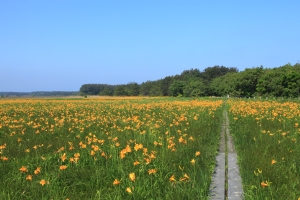
Situated in northwestern Aomori Prefecture, Tsugaru City stretches from the central Tsugaru Plain to the Sea of Japan coast. It is known for its archaeological sites, Bense Wetland, and Takayama Inari Shrine. The city hosts the prefecture's first Nebuta Festival in July
Photo by Aomori Prefecture, © Aomori Prefecture.
Famous for its Tachineputa Festival, held annually in August, featuring towering floats adorned with intricate paper lanterns. These floats depict historical and mythological scenes, attracting thousands of visitors each year. Additionally, Goshogawara is composed of two separate areas resulting from city restructuring
Video by Goshogawara City, © Goshogawara City.
Home to the stunning Lake Towada, one of Japan's largest crater lakes, renowned for its scenic beauty and crystal-clear waters. The area is a popular destination for outdoor enthusiasts, offering hiking trails, boat cruises, and breathtaking views of the surrounding forests and mountains
Video by Aomori Prefecture, © Aomori Prefecture.
Located along Aomori Prefecture's Pacific coast having a rich maritime heritage dating back centuries. It is known for its bustling fish market, Hachinohe Sansha Taisai Festival featuring elaborate floats, and Kabushima Shrine with its picturesque setting on a rocky outcrop surrounded by the sea
Video by VISIT HACHINOHE, © VISIT HACHINOHE.
Mutsu City, situated in northern Aomori Prefecture, is a bustling port town facing Aomori Bay. It thrives on fishing and trade, fostering unique cultures and lifestyles rooted in its abundant natural resources like fisheries and Mount Osore beliefs. This video is a promotional video for the Shimokita Peninsula, including Mutsu City
Video by Mutsu City, © Mutsu City.
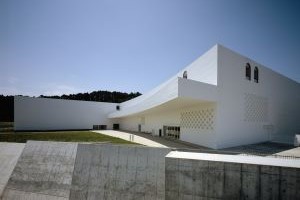
Showcases contemporary and modern artworks, with a focus on local Aomori artists. Its striking architecture, designed by renowned architect Mr. Jun Aoki, is a notable landmark in the city
Photo by Aomori Prefecture, © Aomori Prefecture.
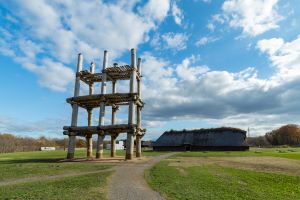
Uncovered during park expansion in 1992, this large Jomon period settlement (approximately 5900-4200 years ago) revealed numerous artifacts and structures. In 2021, it became part of the "Jomon Prehistoric Sites in Northern Japan" UNESCO World Cultural Heritage site, marking Aomori Prefecture's second World Heritage site
Photo by Sannai Maruyama Jomon Culture Center, © Sannai Maruyama Jomon Culture Center.
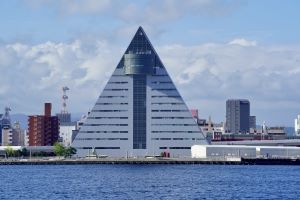
Iconic triangular building in Aomori City that serves as a tourist information center and observation deck. It offers panoramic views of Aomori Bay and showcases local crafts and products
View on Google Maps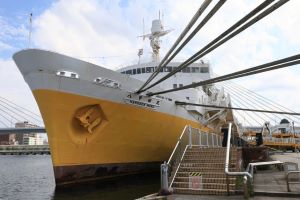
Launched in 1964, the former ferry now serves as a museum showcasing Japan's maritime history and the role of Seikan ferries. It holds the distinction of being the longest-serving ferry among the 55 Seikan ferries and was the final one to depart from Aomori
View on Google Maps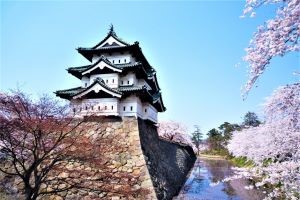
Hirosaki Castle is one of the twelve remaining original castles in Japan with a keep built before the Edo period and the only one in the Tohoku region. Completed in 1611 by Tsugaru Nobuhira, Hirosaki Castle Park is renowned for its breathtaking cherry blossoms in spring, attracting visitors from across Japan
Photo by Aomori Prefecture, © Aomori Prefecture.
The Hirosaki Museum of Contemporary Art, a 20-minute walk from Hirosaki Castle Park, exhibits modern artworks in a renovated brick building, formerly the Yoshino-cho Brick Warehouse cider factory from the Meiji and Taisho periods. Architect Mr. Tsuyoshi Tane's concept for the museum is "inheritance of memory"
Video by Hirosaki Museum of Contemporary Art, © Hirosaki Museum of Contemporary Art.
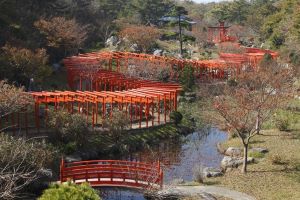
Believed to have been founded during the Kamakura to Muromachi periods, Takayama Inari Shrine is revered locally for prosperity in agriculture, maritime safety, and commerce. The shrine sits atop a hill near Shichirinagahama along the Sea of Japan in Tsugaru City. Approximately a one-hour drive from Aomori City
View on Google Maps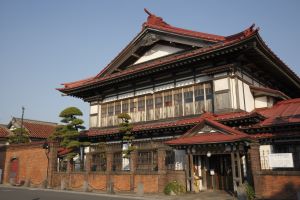
The Dazai Osamu Memorial Museum, also known as the "Shayōkan," is located in Goshogawara City, Aomori Prefecture, and was the birthplace of the novelist Mr. Osamu Dazai. Recognized as an Important Cultural Property by the national government in 2004, it represents a typical modern Japanese-style residence
Photo by Aomori Prefecture, © Aomori Prefecture.
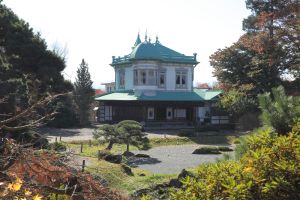
Hybrid Japanese-Western building constructed in 1909, primarily designed for enjoying its gardens. The building features distinctly different designs on its two floors. The first floor showcases traditional Japanese-style architecture, while the second floor exhibits Renaissance-inspired Western architecture
Photo by Aomori Prefecture, © Aomori Prefecture.

Established in 2008, it serves as the core of the Arts Towada project. It transforms Towada City into an open museum by featuring artworks not only within the museum but also in surrounding areas, erasing the boundary between the museum and the city
View on Google Maps
The name "Furofushi Onsen" means "a place where you won't age or weaken." The reddish-brown water, rich in iron and salt, retains heat well and warms the body deeply. The open-air bath, blending seamlessly with the sea, offers a unique sense of freedom
Photo by Aomori Prefecture, © Aomori Prefecture.
Shirakami Sanchi, spanning Aomori and Akita Prefectures, is a mountainous area recognized as a UNESCO World Heritage site in 1993, alongside Yakushima. It is noted for having one of the world's largest and most pristine beech forests, largely unaffected by human activity
Video by Shirakami Sanchi Visitor Center, © Shirakami Sanchi Visitor Center.
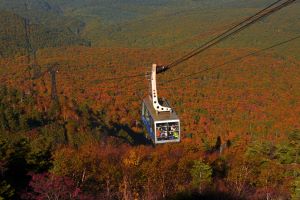
The Hakkoda Ropeway is a scenic cable car ride that offers panoramic views of the Hakkoda Mountains and Aomori City. It is a popular destination for outdoor activities such as hiking and skiing
Photo by Aomori Prefecture, © Aomori Prefecture.
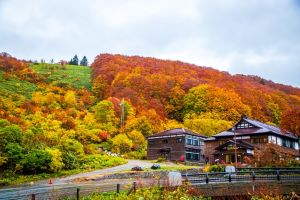
Sukayu Onsen, dubbed the "Hot Spring Above the Clouds," is situated at 900 meters above sea level and is designated as Japan's first national recreational hot spring resort. Its pristine air and high-altitude climate are believed to provide health benefits in just ten days
View on Google Maps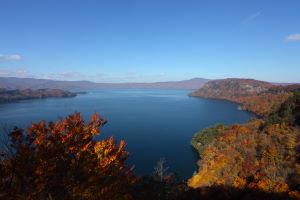
Lake Towada, straddling Aomori and Akita Prefectures, is a caldera lake formed by volcanic activity that began around 200,000 years ago. A caldera lake is created when a volcanic eruption causes a depression, which then fills with rainwater over time
Photo by Lake Towada National Park Association, © Lake Towada National Park Association.
Spanning Aomori, Iwate, and Akita Prefectures, it features Lake Towada and the Oirase Gorge, prized for their scenic beauty. Year-round highlights include lush spring greenery in Oirase, vibrant autumn foliage near Tsuta Swamp, and captivating ice-covered trees on Mount Hakkoda in winter
Video by Ministry of the Environment, © Ministry of the Environment.
Beloved springtime tradition in Aomori Prefecture, Japan, where visitors gather to admire the stunning cherry blossoms in Hirosaki Park, surrounded by the historical charm of Hirosaki Castle
Video by Hirosaki Tourism and Convention Bureau, © Hirosaki Tourism and Convention Bureau.
Designated an Important Intangible Folk Cultural Property of Japan in 1980, this spectacular event embodies the essence of Aomori. Held annually from August 2 to 7, it attracts millions of visitors worldwide. The festival showcases illuminated floats depicting kabuki, history, and mythology, expressing a range of emotions from bold and magnificent to somber and elegant
Video by Aomori City, © Aomori City.
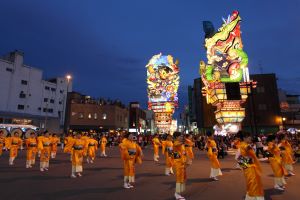
Massive structures over 20 meters tall and weighing 16 tons represent a unique late Meiji period neputa style. The parade, led by a large taiko drum, showcases Tachineputa floats mounted on carts. Pullers in two rows haul the carts using ropes, with musicians playing drums, flutes, and more between them. Behind them, dancers known as haneto chant "Yattemare" as they follow the floats
Photo by Aomori Prefecture, © Aomori Prefecture.
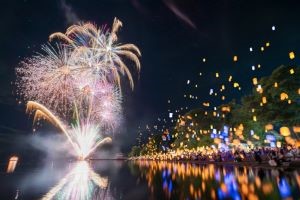
Takes place over two days. Beautiful balloon lanterns reflect on the serene Lake Towada. The festival features message fireworks and a spectacular "Music and Fireworks Show" lasting about five minutes, which is launched at the finale of each day
Photo by Towada City, © Towada City.
Held from July 31 to August 4, this is Hachinohe's largest festival, featuring a traditional shrine procession and a spectacular display of ornate floats. In 2016, it was registered as a UNESCO Intangible Cultural Heritage under the "Yama, Hoko, Yatai, Float Festivals in Japan" category
Video by Hachinohe City, © Hachinohe City.

Starting at sunrise, the Tatehana Wharf Morning Market in Hachinohe City runs every Sunday from mid-March to December. With over 300 stalls, it offers a festive atmosphere and a diverse selection of goods, including fresh seafood, grilled fish, vegetables, rice dishes, and various dine-in options
Photo by Aomori Prefecture, © Aomori Prefecture.
Salt is one of the crucial elements that significantly affects the flavor of dishes. Statistics reveal that residents of Aomori Prefecture consume higher amounts of salt compared to the recommended levels, both among men and women. This higher consumption is attributed to a preserved food culture, including salted and dried foods, which developed out of necessity for the long winter months in the past. Since 2014, the prefecture has been actively promoting salt reduction. It's a statistic that offers fascinating insights.
While many countries preserve diverse regional cuisines, Japan also offers its unique culinary journey. This video highlights select dishes, showcasing distinct local specialties and historical influences in the region
Video by Ministry of Agriculture, Forestry and Fisheries, © Ministry of Agriculture, Forestry and Fisheries.

Aomori Prefecture is famous for its delicious apples, known for their crisp texture and sweet flavor. The Tsugaru region boasts one of the world's leading apple production centers, making it Japan's foremost "apple kingdom," accounting for about 60% of the nation's production
Photo by Aomori Prefecture, © Aomori Prefecture.

Aomori Prefecture's garlic is beloved for its exceptional quality and delightful flavor. Thanks to Aomori's rich natural environment and favorable climate conditions, it accounts for around 70% of Japan's garlic production
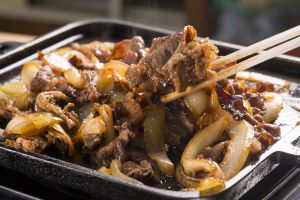
Grilled dish featuring beef belly and onions seasoned with a sweet soy-based sauce. Originating from a food stall near the Misawa US military base in the 1960s, it has become a beloved local favorite in Towada City, evolving into a comfort food
Photo by Aomori Prefecture, © Aomori Prefecture.

Regional dish from Hachinohe, featuring a clear broth made with meat, fish, mushrooms, and vegetables. Crispy Nanbu senbei crackers, made from wheat flour and salt and designed for soups, are added and simmered. These senbei retain their texture even when simmered
Photo by Aomori Prefecture, © Aomori Prefecture.

Traditional dish from the Pacific coast areas like Hachinohe City and Kaidzuka Town, featuring sea urchin and abalone in a luxurious soup. Originally a hearty meal prepared by fishermen using freshly caught ingredients, it evolved into an elegantly presented dish served in restaurants during the Taisho era. The name "Ichigo-ni" originates from the sight of golden sea urchins floating in the milky broth, reminiscent of morning dew on wild strawberries
Photo by Aomori Prefecture, © Aomori Prefecture.

JR EAST, a division of the Japan Railways Group, serves the Tohoku and Kanto regions, as well as parts of Chubu region. Suica, its popular rechargeable smart card, facilitates transportation and cashless payments nationwide. However, it's region-specific and cannot be used for inter-JR region travel, except for special Shinkansen deals via Express Reservations

JR EAST offers various ticket deals and passes catering to different travel needs in eastern Japan. Find your best from the above link
Nexco East, one of Japan's three expressway management companies, offers international car renters unlimited access to the Japan Expressway network for a flat fee, covering most sections, with some exclusions
Aomori Prefecture, part of the Tohoku Region of Japan, with its capital in Aomori City, is divided into the western Tsugaru region—famous for the vibrant Nebuta Festival and apples—and the eastern Nanbu region, known for rich seafood. In the Edo period, the Tsugaru clan, having split from the Nanbu lineage, ruled the Hirosaki Domain in the west, while the Nanbu clan governed the east and Shimokita Peninsula from Morioka (now in Iwate Prefecture). Their long-standing regional rivalry lives on today in friendly banter and cultural contrasts, adding local color and character to Aomori’s tourism experience.
Video by Aomori Prefectural Organization for Tourism and Globalization, © Aomori Prefectural Organization for Tourism and Globalization.